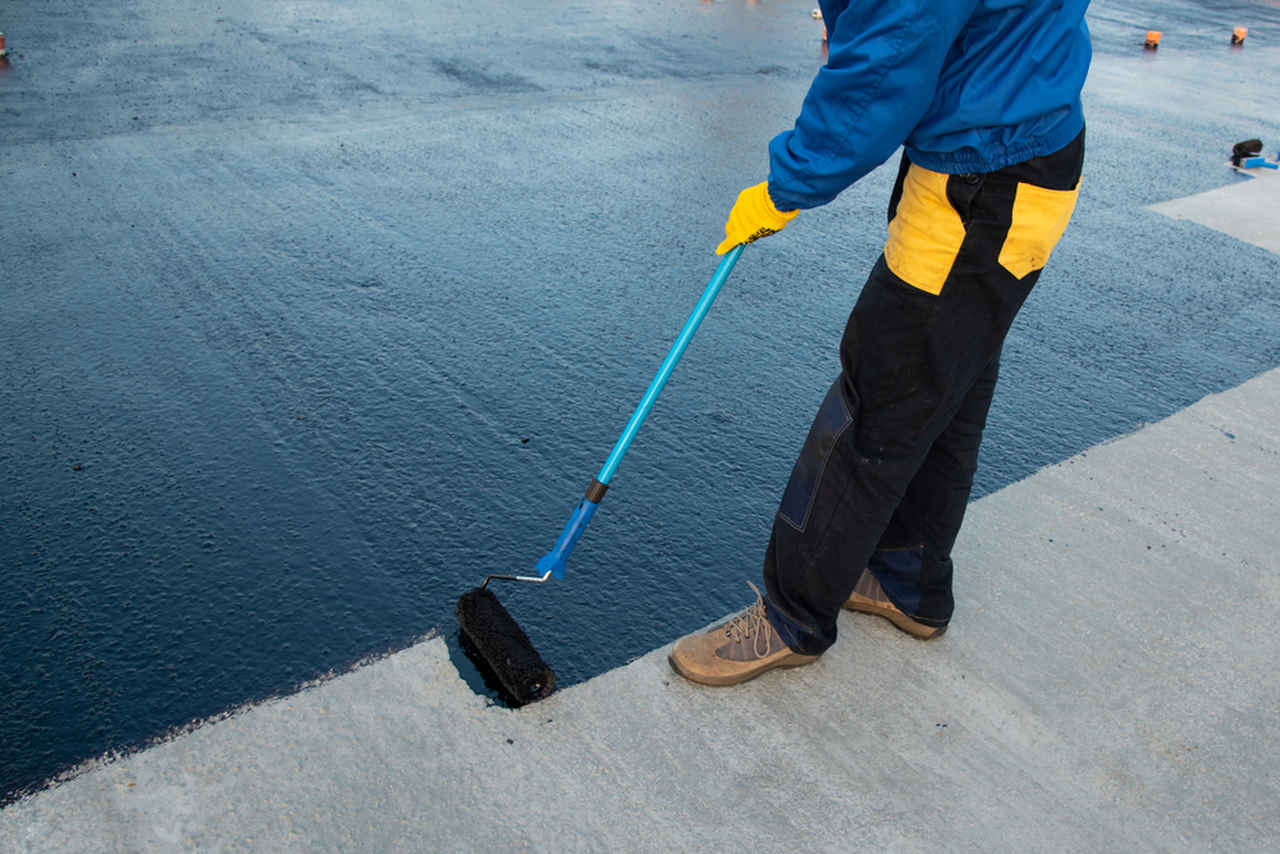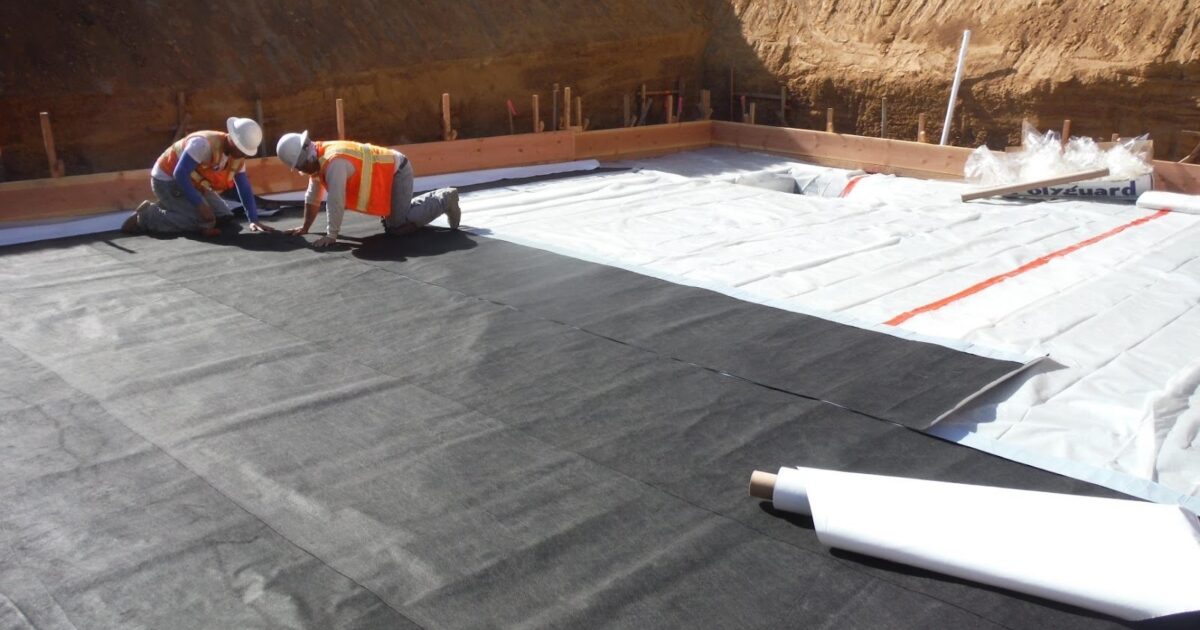How Yard drainage Omaha Reduces Flood Risk Instantly
Wiki Article
Kinds of Waterproofing: Checking Out the Various Approaches and Their Applications
Waterproofing is an important facet of building and construction and upkeep. It protects frameworks from the detrimental results of water damage. There are several approaches available, each with its one-of-a-kind applications and benefits. From membrane layer systems to cementitious solutions, understanding these alternatives is vital for reliable implementation. The choice of waterproofing technique can greatly affect resilience and durability. Discovering these different methods discloses their distinctive advantages and prospective obstacles, triggering further consideration of excellent solutions.Membrane Waterproofing Solutions
Membrane waterproofing systems act as a crucial barrier versus water breach in numerous frameworks. These systems usually include thin sheets made from materials like rubber, thermoplastic, or bitumen, which are related to surfaces to avoid dampness infiltration. They can be installed above or listed below grade and are particularly effective in areas susceptible to high water direct exposure, such as basements, roofing systems, and foundations.The setup procedure includes cleansing the substrate, using adhesives or guides, and specifically suitable the membrane layer to ensure total insurance coverage. Membrane layer systems can be either totally stuck, mechanically affixed, or laid loose, relying on the specific requirements of the task. They provide toughness and adaptability, fitting structural movements without compromising their waterproofing capabilities. Additionally, these systems can be reinforced with extra layers for boosted defense. Ultimately, membrane waterproofing systems are important for safeguarding frameworks versus water damage and preserving long-lasting integrity.Liquid-Applied Waterproofing Coatings
Liquid-applied waterproofing coatings provide a functional option for safeguarding surface areas from water infiltration - Basement waterproofing Omaha. These coverings contain fluid products that, when applied, create a seamless, adaptable membrane. Their flexibility permits for application on different substrates, including concrete, steel, and wood. The coverings can be made use of in diverse settings, from property to industrial settings, making them ideal for roofings, foundations, and below-grade structures.One substantial advantage of liquid-applied layers is their ability to adapt uneven forms and permeate splits, producing a robust obstacle against dampness. They frequently show outstanding bond residential properties and resistance to UV radiation, making sure longevity and toughness. In addition, the application process is generally straightforward, permitting quick setup and lowered labor expenses. This method likewise lessens the threat of water pooling, as the continuous layer efficiently directs water away from prone locations. Overall, liquid-applied waterproofing finishes are an efficient selection for comprehensive water defenseCementitious Waterproofing Solutions

Cementitious waterproofing options offer a durable option for frameworks requiring reliable dampness protection. These systems largely use a blend of concrete, sand, and chemical ingredients to create a water-proof barrier. They are often put on surfaces such as concrete wall surfaces, structures, and floorings, supplying a resilient, long-lasting protection versus water intrusion.One of the key benefits of cementitious waterproofing is its simplicity of application; it can be applied utilizing a brush, roller, or spray, making it ideal for different task sizes. In addition, this technique is suitable with numerous surface areas and can often be made use of together with various other waterproofing techniques.Cementitious remedies are particularly efficient in atmospheres where water exposure is a problem, such as basements or below-grade structures. from this source Their exceptional adhesion buildings ensure that they bond well with substratums, providing a strong and nonporous layer versus moisture infiltration.
Bentonite Waterproofing
Bentonite waterproofing is a highly efficient technique that makes use of salt bentonite clay to create a natural barrier against water. This method manipulates the unique homes of bentonite, which increases upon contact with water, sealing any type of prospective leaks and protecting against dampness seepage. It is commonly used in various applications, including foundation walls, tunnels, and keeping walls, where water resistance is essential.Bentonite can be used in numerous kinds, such as panels or blankets, supplying adaptability in installment. Its capacity to self-seal makes it an eye-catching alternative for locations based on moving dirt or ever-changing water degrees. Furthermore, bentonite waterproofing is environmentally friendly, as it is a natural material that does not present unsafe chemicals right into the environments.Drainage and Exterior Waterproofing Systems
Reliable waterproofing usually entails a mix of strategies, consisting of drainage and exterior systems. Drain systems, such as French drains and sump pumps, are made to reroute water far from structures, minimizing hydrostatic stress versus foundations. These systems are necessary in preventing water accumulation that can cause architectural damages and mold growth.External waterproofing, on the other hand, includes using safety obstacles to the structure's exterior. Techniques such as the installment of water resistant membranes, coatings, or sealers can assist avoid water seepage. This technique not only safeguards the foundation but likewise enhances the general sturdiness of the structure.Together, drainage and external waterproofing systems create a comprehensive remedy to manage water properly. By carrying out these techniques, residential or commercial property proprietors can secure their financial investments against the destructive effects of wetness, guaranteeing lasting weblink stability and safety and security for their buildings.Regularly Asked Inquiries
Just how Do I Pick the Right Waterproofing Approach for My Project?
Choosing the best waterproofing method depends upon factors such as task kind, ecological problems, budget plan, and preferred long life. Assessing these facets enables educated choices customized to particular requirements and requirements.
Can Waterproofing Be Applied in Cold Weather Issues?
Waterproofing can be applied in chilly climate conditions, yet it calls for specific products and strategies. Cold temperatures may influence treating times and attachment, requiring cautious option of products developed for low-temperature application.
What Are the Usual Signs of Waterproofing Failing?
Usual signs of waterproofing failing consist of noticeable water stains, peeling off paint, damp odors, mold and mildew development, and splits in walls or foundations. Drainage & waterproofing company Omaha. These indicators suggest that wetness is passing through the obstacle, endangering its effectivenessFor How Long Does Waterproofing Last Before Needing Maintenance?
The durability of waterproofing differs, commonly lasting in between 5 to ten years. Variables such as worldly high quality, environmental conditions, and maintenance practices influence its toughness, demanding periodic evaluations to ensure efficient protection against water intrusion.Are There Eco-Friendly Waterproofing Options Available?
The concern of environment-friendly waterproofing alternatives exposes a growing rate of interest in sustainable materials (French drain installation Omaha). Different natural materials, such as plant-based sealants and recycled products, supply reliable options while lessening environmental impact, interesting environmentally Click Here conscious customersReport this wiki page